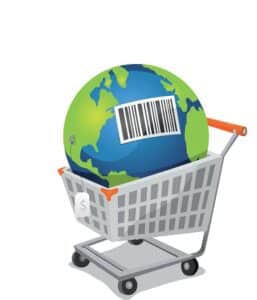
How To Build A Value Delivery System in Marketing For B2B Products 🚚
Should going toe-to-toe with your competitors come first in formulating a pricing strategy? Or should business leaders create a new value delivery system in marketing to grow share of wallet opportunities?
>Download Now: Free PDF A Capability Framework for Pricing Teams
Many managers argue for the former. But the problem with this approach is that winning is often reduced to a zero-sum game, i.e., that all competitors must lose in order for you to win more market share. At Taylor Wells advisory, we believe that a zero-sum game approach is flawed and limited. What’s more, our research shows that to really compete in a changing landscape requires a more expansive approach. Namely an approach that seeks to grow the share of the pie for everyone by delivering more value to customers.
So in this article, we will discuss how businesses can grow the total share of the pie by creating a new value delivery system in marketing.
We argue that going toe-to-toe with competitors should not come first in formulating strategy. But rather much further down the list of priorities.
We believe that companies are wasting precious time competing to win in the old fashioned sense of the term. And, as a result, fail to identify the needs of customers and attend to those needs.
At the end of the article, you will gain insights on how to build a value delivery system in marketing B2B products. Using the latest price-value modelling tools, methods and analytics.

Value Delivery System in Marketing
More often than not, it’s the customer — not the competition — that is the key to avoiding price wars with competitors. A tight focus on the customer is often the best way to grow share of wallet opportunities – even in highly competitive, low margin industries.
For example, 2 years ago, a chemicals business we know was experiencing declining margins for the best selling product. The reason was due to FX, fluctuating costs, commoditisation and increased competition. The business’ pricing team did an extensive analysis of the business’ financial situation, product portfolio and market dynamics. Their analysis revealed a significant and emerging group of new entrants were pulling prices down – often below costs.
However, instead of succumbing to this competitive price pressure; and reducing prices across the board, the business and their pricing team instead introduced a different brand into their mix of products. The new brand was one which: customers really valued; could be separated into different, “Good, Better, Best” service levels, allowed for different customer experiences; and could be sold at lower price points than their existing portfolio.
This new value delivery system in marketing brought about much better pricing and sales system for the business. They introduced tiered pricing, new advanced modelling tools and a much better reporting system; and in the background, strategically positioned prices without their competitors even knowing.
As this business’ competitors focused on prices of their best selling products, the pricing team sought to position the firm to target a broader part of the market. They introduced a new brand that they knew their customers would want; without falling below costs for the new product or losing margins on their existing offering. This gave the business more room to manoeuvre in the market. They also could migrate customers to a new mix of products. And introduce new performance rebates, which they couldn’t do with their existing portfolio.
By changing their mindset and value delivery system in marketing for b2b products, this chemicals business soon learned that they didn’t have to either fight their competitors head-on to win or ignore “price wars” and competitive price pressure to protect and grow margins.
The net result of changing their value delivery system in marketing B2B products was a 2% margin improvement in 6 months; as the business migrated customers to a new mix of products.
The ongoing result from a complete mindset shift was a much more effective market strategy. That gave customers maximum value beyond the price tag that they are paying for compared to the product they currently used.
The culture impact of the new delivery system was a newfound confidence in their value proposition. Including a steady and objective focus on their goals and objectives during times of high competitive tension. Over a two year period, they were able to capture a further 4% additional margin.
The price-value model
Can you have a new value delivery system in other B2B industries too? Yes, you can. Simply, if you have new categories or categories under significant threat from competitors. A value delivery system in marketing is a better alternative to any competitive strategy a business can use for its B2B products.
For example, many companies still choose to take a price down approach to stave off competitive pressure when they shouldn’t. Our research shows, for example, that competing on price for new categories or categories experiencing significant price pressure is rarely the answer to price pressure.
In particular, we find that it is still very common for business managers to over-think their competitors’ reactions to new products and discount prices more than the situation requires. Often managers apply excessive discounts because they don’t have intel on how competitors respond to new products or price changes. As a result, they take prices down. Sometimes by 30% or more and experience in turn significant and often unnecessary margin loss.
Alternatively, we find managers saying/believing that any loss incurred by the price decrease will automatically be recovered by volume gains. However, rarely do businesses recover losses resulting from price wars. In reality, competitors respond in kind to you lowering prices and a cycle of commoditisation take hold of the industry. Often slashing their prices and creating new channel conflicts that take months if not years to fix.
In these instances, it is recommended that businesses don’t take a knee jerk reaction to price to beat the competition. They should instead consider bolder, more expansive pricing strategies to define or position prices in the market.
For example, consider instead value price models that include profit sharing with customers, pricing agreements that factor in risk (e.g., cost-of-materials triggers), and changes in the unit sales model (e.g., per hour of use vs. per box).
The above value-based approach is the opposite of a zero-sum game approach. It is founded on a belief that more value can be unlocked and delivered to all via a new model. One that reduces the downside or increases the upside for either party.
Below listed are some examples of value-based models. These models are used by B2B and B2C business to avoid head-to-head rivalries with competitors. And deliver more value to customers.
Measuring the total value to customers
The objective of measuring the total value to customers is that it gives you specific details on the additional value a product provides to customers beyond what they already obtain from their current suppliers. Also, it determines the amount that the customer will pay to shift from one product to the other. Therefore, measuring the total value to customers is extremely helpful to B2B firms because it alerts you to which customer segments value your products the most, by how much and why.
A value delivery in marketing for B2B products then enables B2B firms to group the market more accurately and design a product strategy to meet the needs of your different market segments. The lasting benefit of this new value delivery system in marketing is that you’ll know before your competitors and even your customers how much to charge specific segments for any additional value they get.
A business: value delivery system
Research shows that customers establish their buying decisions on 2 criteria: the benefits of a specific product/service and the price. This means B2B firms really want to be identifying which customers are willing to pay for that product/service. Including specific answers on consumption: i.e., the frequency of use. From here, and only then can a B2B firm know what price to charge. Usage (actual and at-risk) minus the price, constitutes the actual value of the product to the customer.
For example, if a customer is willing to pay up to $10 for a product and its price is $7, buying that product nets a customer $3 worth of value. Normally, customers will buy the good or service that provides the most value for them.
In reality, a B2B firm delivers superior value to a specific subgroup of customers – but not all. Probably one or two customer groups. So, for a business to price correctly rather than lose money, it must deliver the best value to these customers and charge them the right amount.
Discussion: Going head-on with competitors must not be a priority in developing a strategy
Building a value delivery system in marketing then requires in-depth analytics and price value models. The overall aim here is to work through real business scenarios to understand the range of outcomes for you, your customers versus your competitors. This will inevitably require thoughtful and active management of risk aka managing the downside. Competitors will respond (disruptors can face dramatic reactions from competitors), which means you need to know what to do if and when others follow suit.
As managers develop a value delivery system in marketing B2B products, the needs of the customers come first in any modelling. This doesn’t mean that it’s a bad thing to win the “battle” with competitors as you do this. However, going head-on with competitors should not come as a priority in developing a new market strategy. Rather, paying attention to the needs of customers and correcting and improving how the business responds and performs to these needs come first.
Implications
- In developing a value proposition, it’s vital to work out exactly the benefits that potential customers want. Including how much they will pay for those benefits. And, not just vague benefits, like “good quality” either. Instead, identity observable and concrete features and outcomes of the product/service (i.e., short waiting times, ease of use, speeds, etc.).
- Recognising exactly what customers value gives the business the opportunity to divide potential buyers into groups. Such as groups of prospective customers that want more or less the same product benefits.
- To deliver an effective value proposition, divide up the business system into customer-oriented stages — identifying, prioritising and then communicating the right customer value drivers during sales calls and price discussions.
〉〉〉 Get Your FREE Pricing Audit 〉〉〉
Conclusion
The best market strategy is not one with the most appealing value proposition; but rather, a firm that best defines and implements a customer-focused value proposition.
The best way to create a value-adding strategy is to provide value to customers instead of imitating the competition.
If a business just pays attention to its competitors, it just competes on the aspects or features that they probably wrongly, consider significant.
For a comprehensive view and marketing research on integrating a high-performing capability team in your company,
Download a complimentary whitepaper on How To Maximise Margins.
Are you a business in need of help to align your pricing strategy, people and operations to deliver an immediate impact on profit?
If so, please call (+61) 2 9000 1115.
You can also email us at team@taylorwells.com.au if you have any further questions.
Make your pricing world-class!
Related Posts
Leave a Reply Cancel reply
Categories
- marketing strategy (26)
- Organisational Design (14)
- Podcast (114)
- Pricing Capability (87)
- Pricing Career Advice (10)
- Pricing Recruitment (19)
- Pricing Strategy (287)
- Pricing Team Skills (13)
- Pricing Teams & Culture (24)
- Pricing Transformation (47)
- Revenue Model (25)
- Sales Effectiveness (27)
- Talent Management (7)
- Technical Pricing Skills (35)






